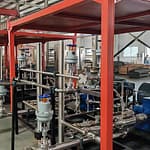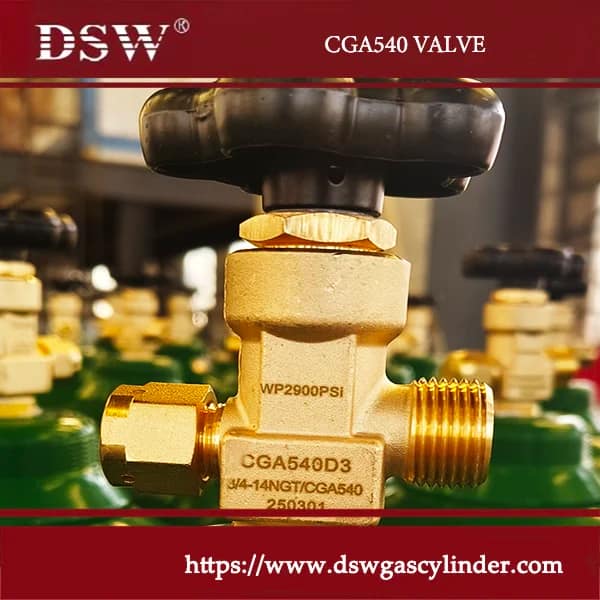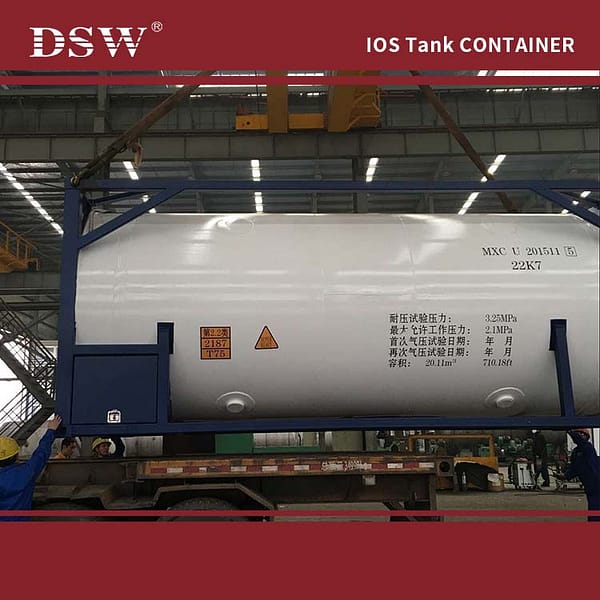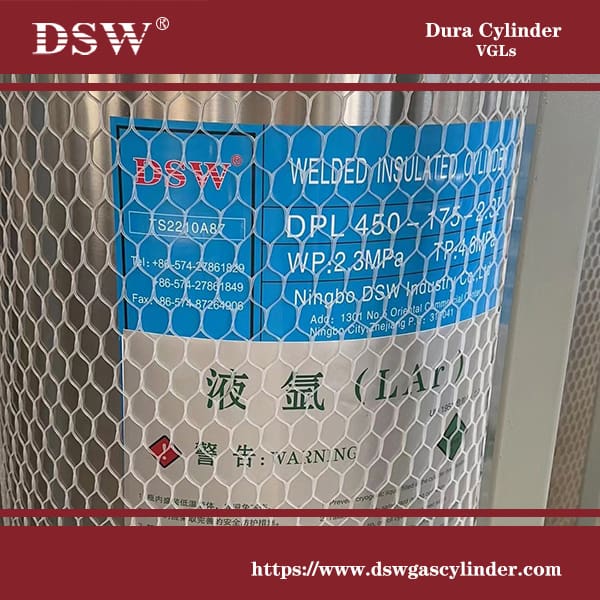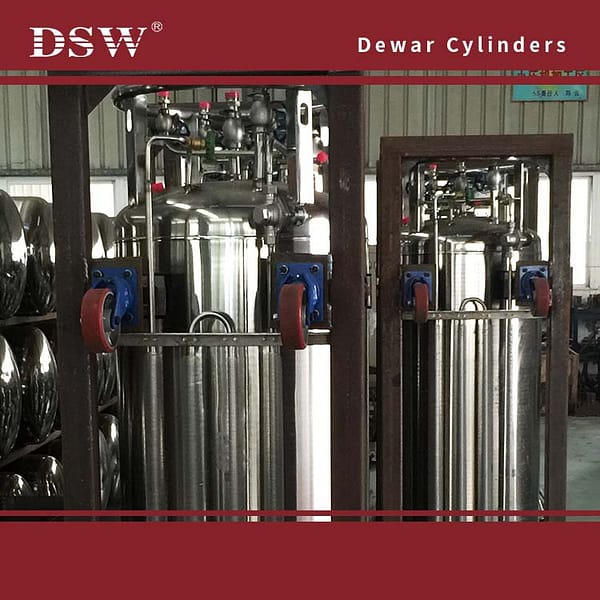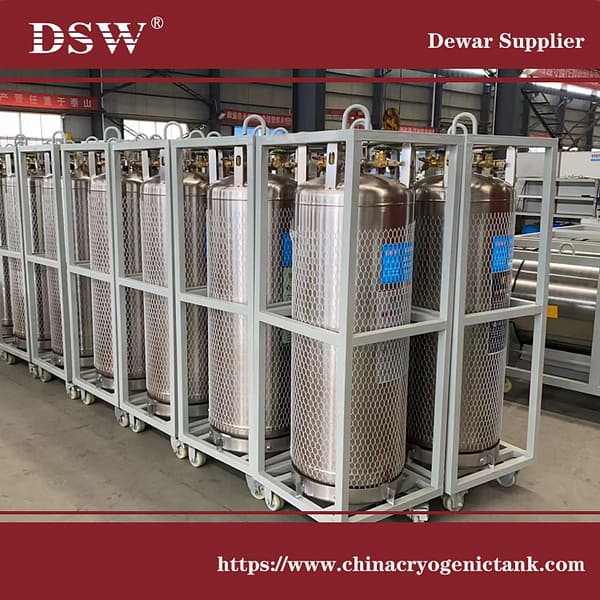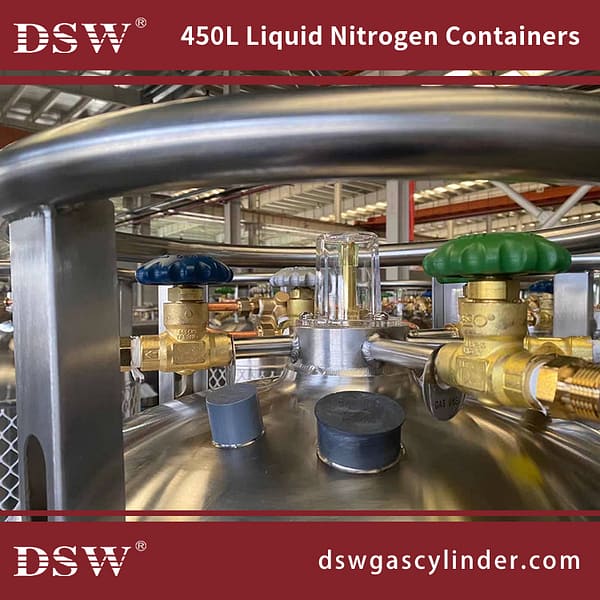Dewar vaporizer system
The cryogenic vaporizers, or dewar vaporizer systems, operate based on the principle of heat exchange.
It utilizes the heat from the surrounding ambient air to vaporize the cryogenic liquid. The system consists of a Dewar flask or container that holds the liquid and a vaporizer unit connected to the flask.
DSW is a global supplier of cryogenic equipment, including cryogenic vaporizers. We offer both single vaporizers and filling skids, catering to the needs of various industries.
A cryogenic vaporizer has two configurations: a single vaporizer and a filling skid.
These configurations are essential components in cryogenic systems that convert liquefied gases into their gaseous form. The single vaporizer is an independent unit dedicated to the conversion process. On the other hand, the filling skid is a comprehensive system consisting of multiple components, including the vaporizer, pressure regulators, flow meters, safety devices, and control systems. Its purpose is to facilitate the safe and efficient filling and vaporization of cryogenic fluids from storage containers like cryogenic tanks or cylinders. These systems cater to the specific needs of various industries, such as gas distribution, healthcare, and research facilities.

Oxygen Vaporizer Systems for High-Volume Gaseous Oxygen
Liquid oxygen vaporizer systems, specifically heat exchangers, are essential for converting liquid oxygen from containers into high-volume gaseous oxygen. This process is crucial for meeting the flow requirements of burning bars and Oxy-Fuel Torches. DSW offers various vaporizer systems designed for this purpose.
Liquid Oxygen Dewar Output Limit:
Liquid oxygen Dewars have internal vaporizers with a limited capacity. Typically, they can produce approximately six cubic feet of gaseous oxygen per minute (SCFM). However, burning bars require a higher flow rate, ranging from 20 to 100 scfm. To enable the use of liquid oxygen with burning bars, an external vaporiser must be added. The vaporizer’s size depends on the burning bar’s size and the required flow rate. This also applies to Oxygen-Fuel Torch.
Features
- Cryogenic Operation: A Cryogenic vaporizer is designed to handle and operate at extremely low temperatures. They are specifically engineered to vaporize cryogenic liquids such as liquid oxygen, nitrogen, argon, or carbon dioxide.
- Efficient Heat Exchange: The Dewar vaporizer system utilizes a heat exchange mechanism to convert the cryogenic liquid into a gaseous state. This process involves transferring heat from an external heat source to the cryogenic liquid, facilitating vaporization.
- High Vaporization Capacity: Cryogenic vaporizers can vaporize large quantities of cryogenic liquids to meet high-volume gas demand. They are designed to handle substantial flow rates and generate significant gaseous output.
- Safety Features: The Dewar vaporizer system incorporates safety features to ensure secure operation. These features may include pressure relief valves, temperature sensors, and emergency shutdown mechanisms to prevent overpressure or overheating.
- Versatility: Cryogenic vaporizers can be used with different cryogenic liquids. They are adaptable to handle various types of cryogenic gases, making them suitable for multiple industrial applications.
- Compact Design: Cryogenic vaporizers are often designed to be compact and space-efficient. They are engineered to occupy minimal floor space while maximizing vaporization capacity.
- Easy Installation and Maintenance: Cryogenic vaporizers are typically designed for easy installation and maintenance. They can be integrated into existing gas supply systems with relative ease. Furthermore, they often have accessible inspection, cleaning, and routine maintenance components.
- Temperature and Pressure Control: Cryogenic vaporizers may incorporate temperature and pressure control systems to maintain optimal operating conditions. These systems help regulate the vaporization process and ensure consistent output parameters.
- Energy Efficiency: Cryogenic vaporizers are designed to maximize energy efficiency. They aim to minimize energy consumption during vaporization, reducing operational costs.
- Remote Monitoring and Control: Some advanced cryogenic vaporizers may offer remote monitoring and control capabilities. These allow operators to remotely monitor and adjust vaporizer parameters, enhancing operational convenience and control.

